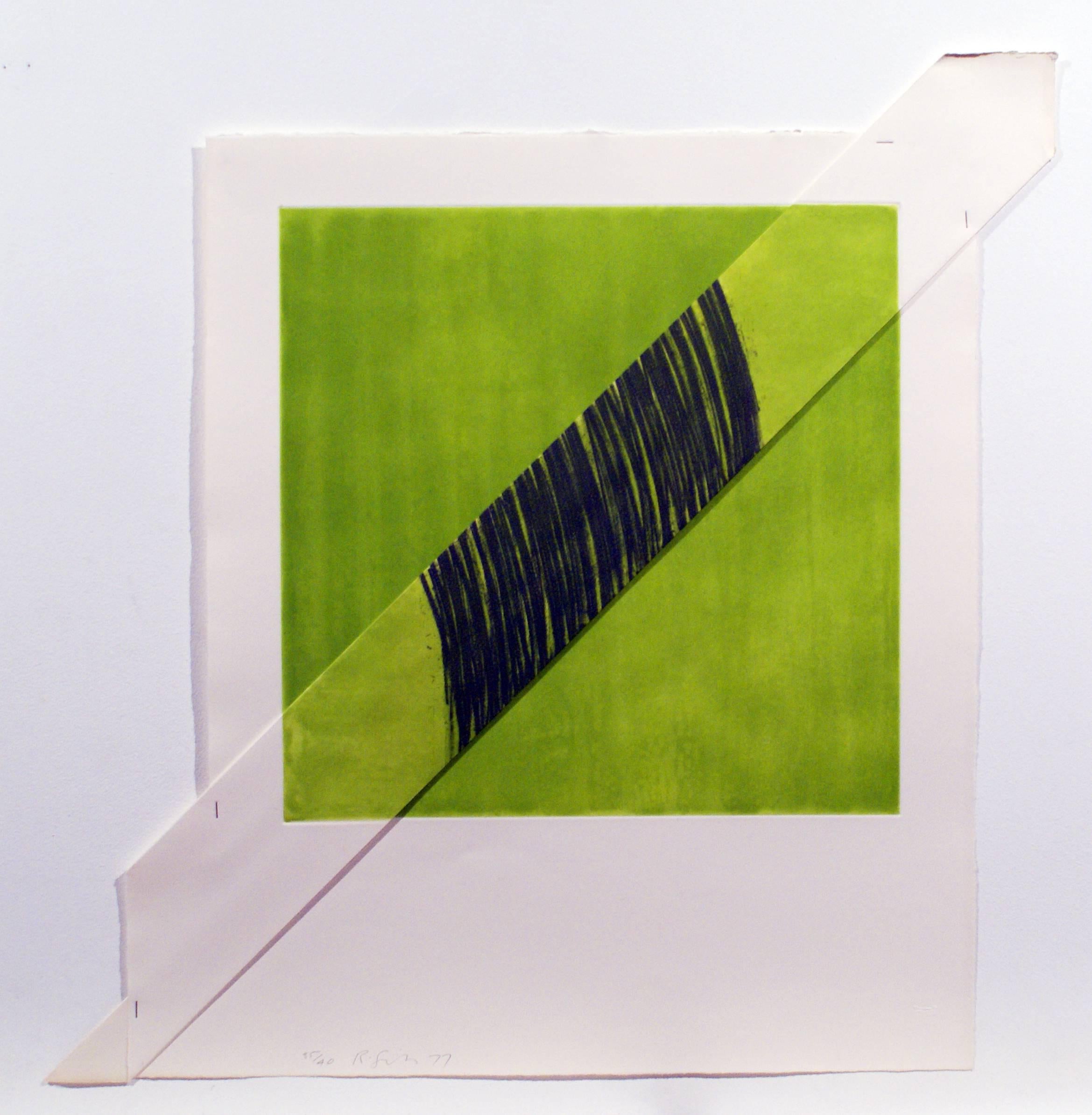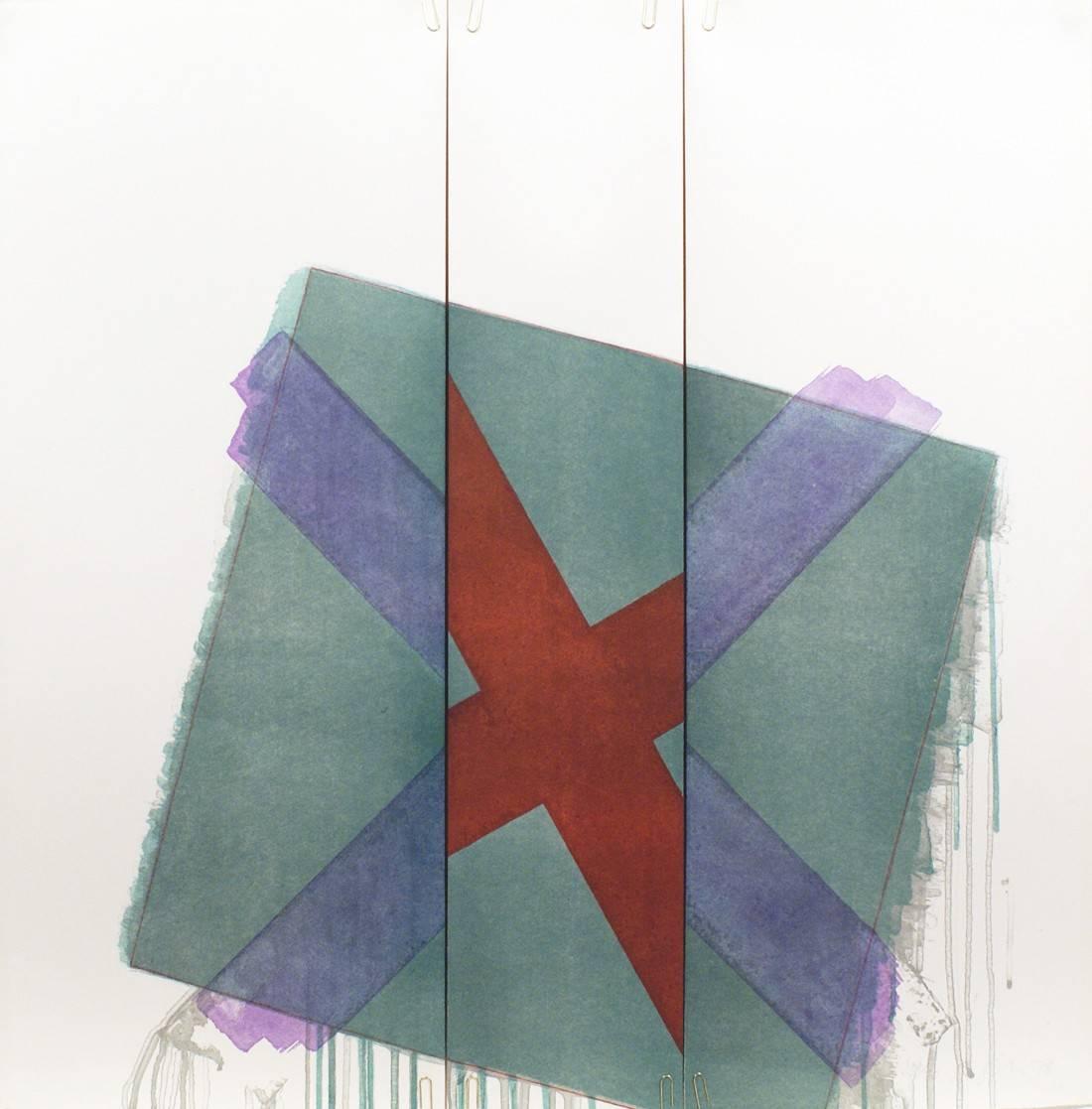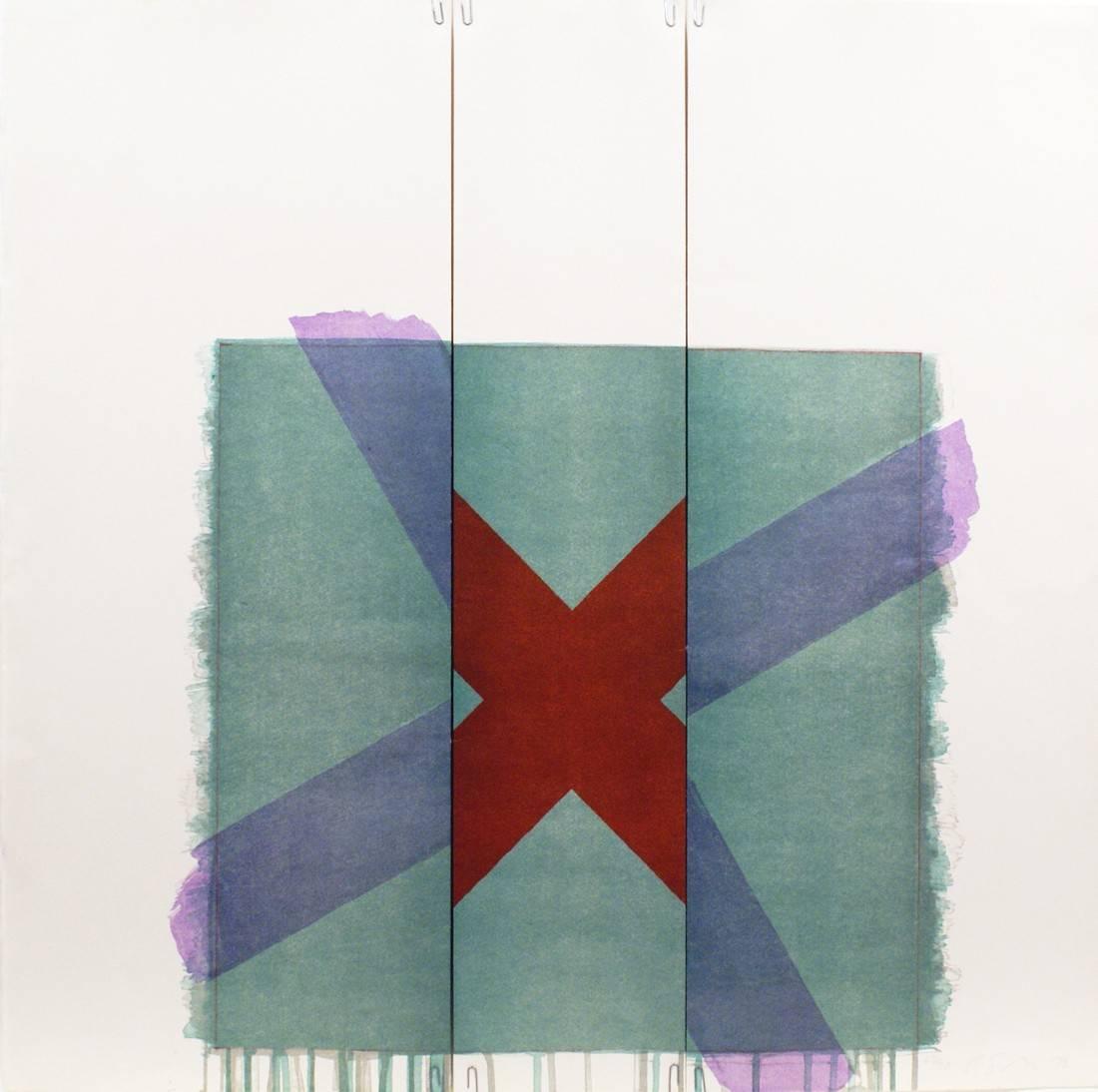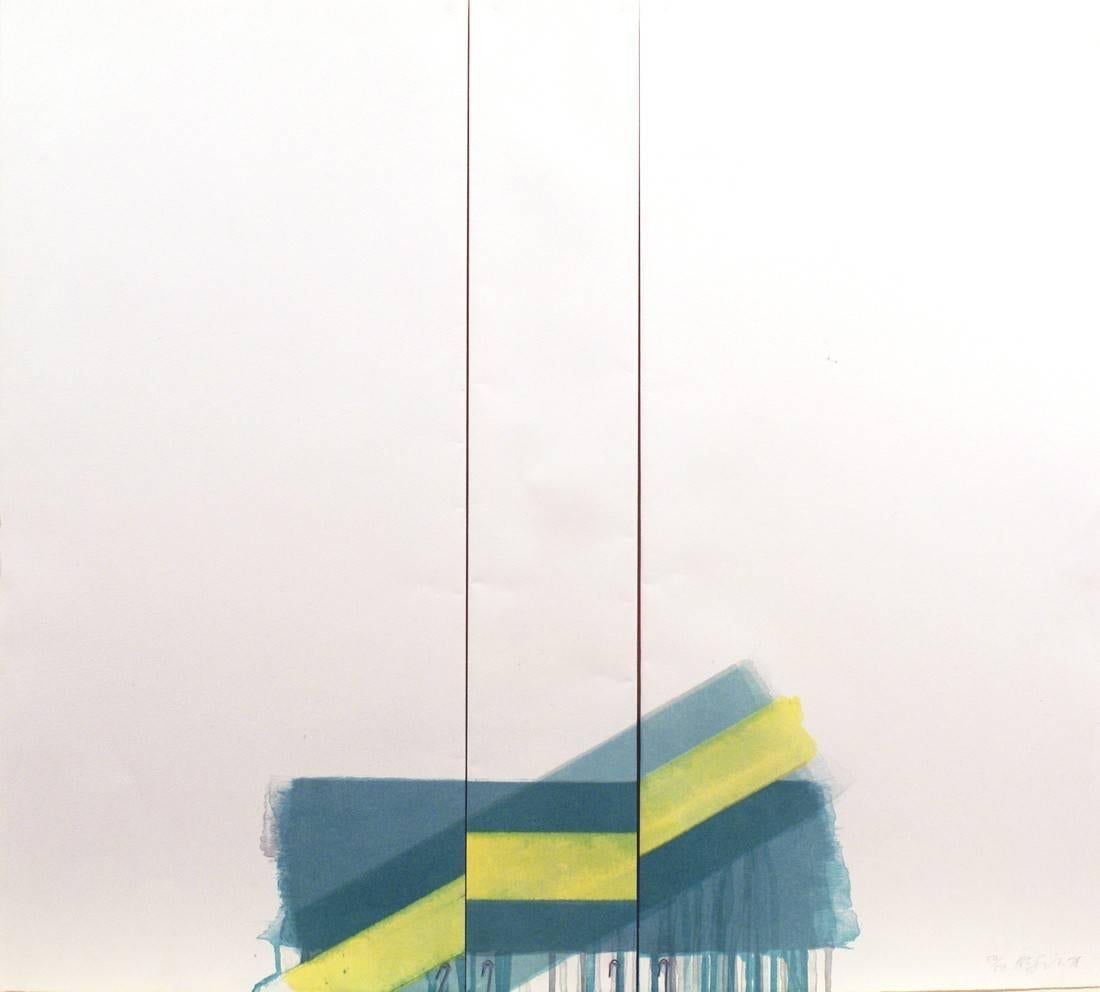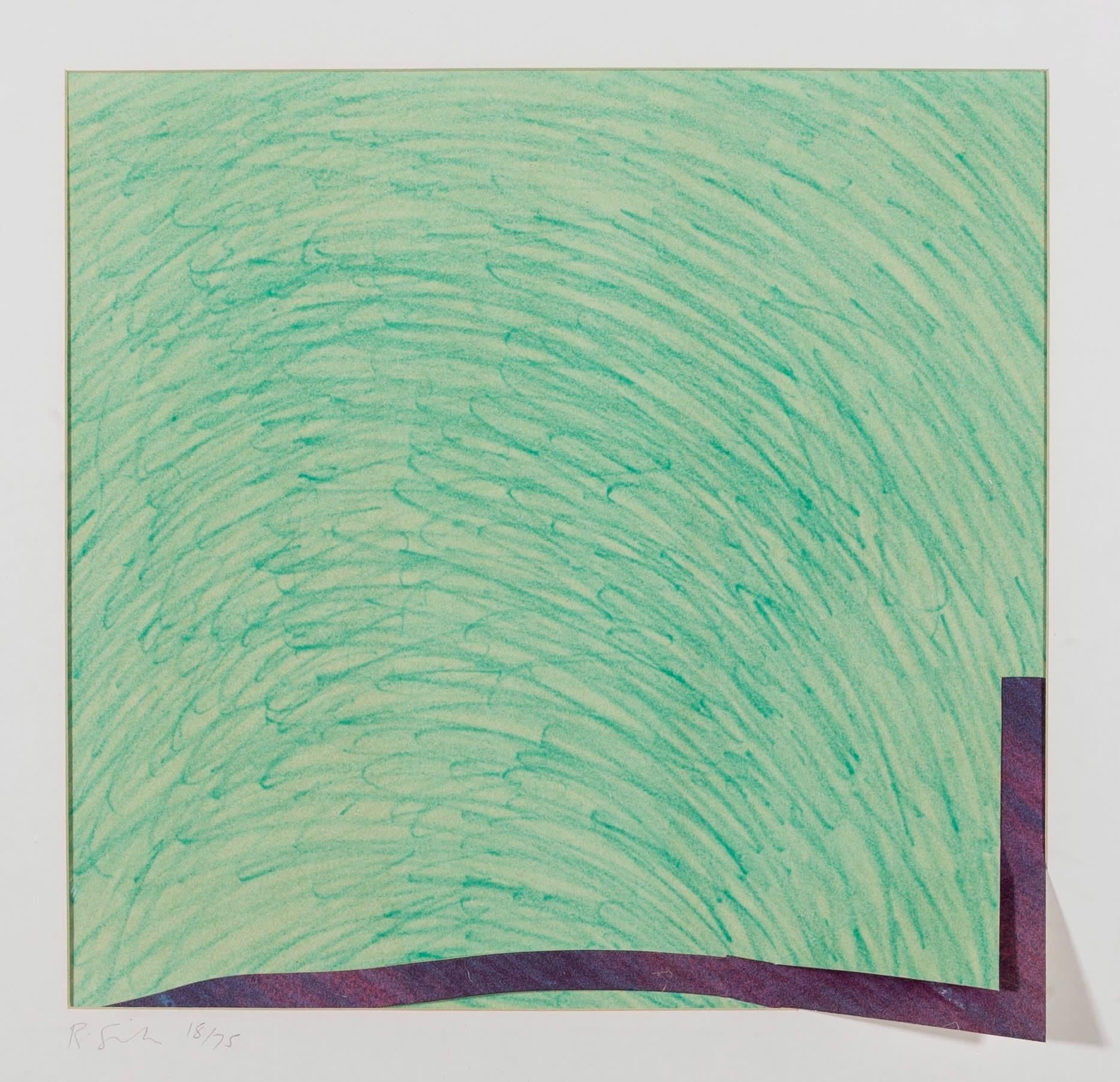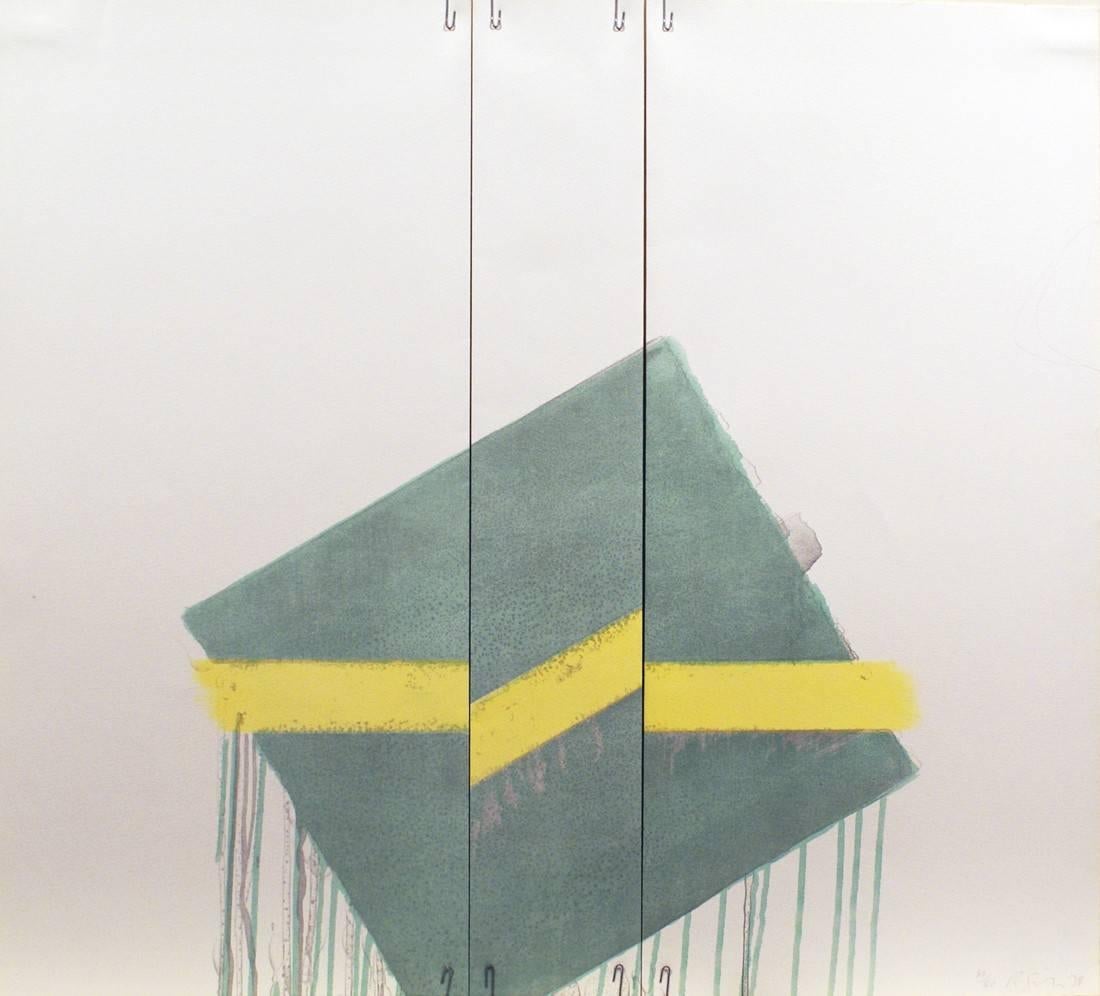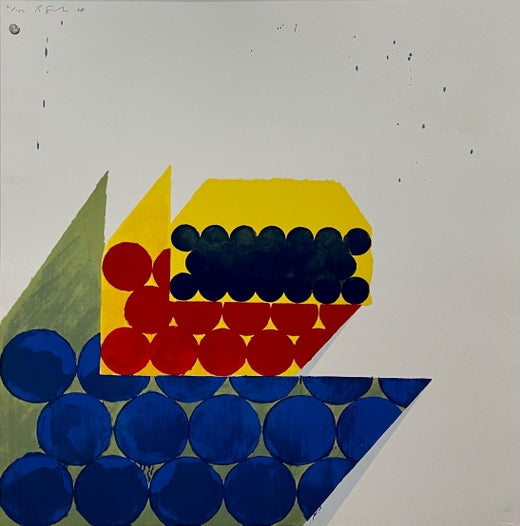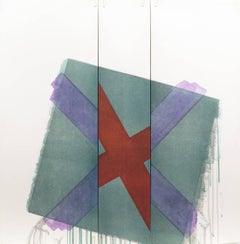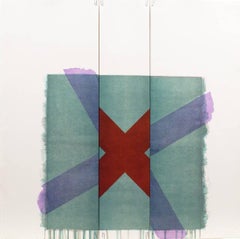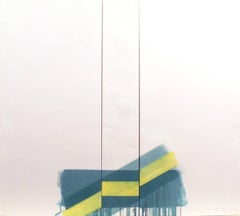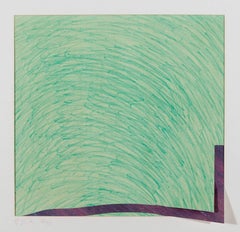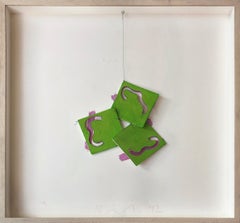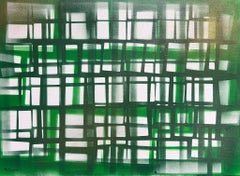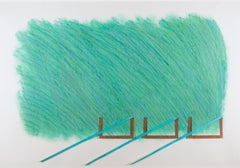Items Similar to Garden City (green tied square)
Want more images or videos?
Request additional images or videos from the seller
1 of 5
Richard SmithGarden City (green tied square)1976
1976
$1,079.70
£800
€927.49
CA$1,508.26
A$1,640.83
CHF 865.84
MX$19,733.77
NOK 10,922.22
SEK 10,164.86
DKK 6,926.81
About the Item
Edition of 50
76 x 76 cms (30 x 30 ins)
- Creator:Richard Smith (1931 - 2016, English)
- Creation Year:1976
- Dimensions:Height: 29.93 in (76 cm)Width: 29.93 in (76 cm)
- Medium:
- Movement & Style:
- Period:
- Condition:
- Gallery Location:London, GB
- Reference Number:Seller: RSE0221stDibs: LU26221538003
Richard Smith
Charles Richard "Dick" Smith was an English printmaker and painter. He Attended St Albans School of Art followed by post-graduate studies at the Royal College of Art, London, from 1954-57. Smith shared a flat-cum-studio with Peter Blake in his second year at the RCA, and then again for two years after he left the college in 1957. When Terence Conran's Soup Kitchen opened on Fleet Street in the late 1950s, it featured a letter-collage mural by Smith and Blake. Michael Chow would later commission Smith to design installations for his restaurant in Los Angeles, and Chow and Conran have remained two of his biggest supporters. In 1959 he moved to New York to teach on a Harkness Fellowship, staying for two years, where he produced paintings combining the formal qualities of many of the American abstract painters which made references to American commercial culture. The artist's first solo exhibition was at the Green Gallery. As his work matured it tended to be more minimal, often painted using one colour with a second only as an accent. In trying to find ways of transposing ideas, Smith began to question the two-dimensional properties of art itself and to find ways by which a painting could express the shape of reality as he saw it. These principles he carried into his graphic work by introducing cut, folded and stapled elements into his prints; some works were multi-leaved screenprinting, and others printed onto three-dimensional fabricated metal. Smith returned to England in 1963 - specifically East Tytherton, Wiltshire where Howard Hodgkin was a neighbour - and gained critical acclaim for extending the boundaries of painting into three dimensions, creating sculptural shaped canvases with monumental presence, which literally protruded into the space of the gallery. Evocative titles such as Panatella and Revlon, and cosmetic, synthetic colours alluded to the consumer landscapes of urban America which had proved so influential. He showed at the Kasmin Gallery, a venture between Kas and the Marquess of Dufferin and Ava in New Bond Street, throughout the 60s, more-widely known as David Hockney's first gallery. Smith was invited to exhibit at the XXXV Venice Biennale as the official British artist in 1970. Smith taught with Richard Hamilton at Gateshead in 1965, where he met Mark Lancaster and Stephen Buckley, and again in 2000, becoming close to the artist and his wife, Terry. By the late 1960s Smith's ambition to produce paintings which shared a common sensibility with other media, such as film and photography, began to wane and he focused on the formal qualities of painting. First exhibited in New York in 1971, the traditional wooden supports of the canvases were replaced by aluminium rods and strings, allowing them to be hung freely in response to the surrounding architecture. Smith continued in the subsequent decades to construct site-specific works in public and private spaces often hanging from the ceilings or architectural supports. He resettled in Patchogue, New York in around 1977. Smith was awarded the CBE in 1971.
About the Seller
4.8
Recognized Seller
These prestigious sellers are industry leaders and represent the highest echelon for item quality and design.
Established in 1960
1stDibs seller since 2015
119 sales on 1stDibs
Typical response time: Several days
Associations
International Fine Print Dealers AssociationSociety Of London Art Dealers
- ShippingRetrieving quote...Shipping from: London, United Kingdom
- Return Policy
More From This Seller
View AllGREEN (folded green square with 'wings')
By Richard Smith
Located in London, GB
Edition of 40
76 x 75 cms (30 x 29.5 ins)
Category
1970s Abstract Abstract Prints
Materials
Etching
Two of a Kind VIb (dark red x on green)
By Richard Smith
Located in London, GB
70 x 72 cms (27 1/2 x 28 1/2 ins)
Edition of 70
Category
1970s Abstract Abstract Prints
Materials
Color, Lithograph
Two of a Kind VIa (dark red x on green)
By Richard Smith
Located in London, GB
70 x 70 cms (27 1/2 x 27 ins)
Edition of 70
Category
1970s Abstract Abstract Prints
Materials
Color, Lithograph
Two of a Kind Ib (yellow line on green)
By Richard Smith
Located in London, GB
70 x 76.2 cms (27 1/2 x 30 ins)
Edition of 50
Category
1970s Abstract Abstract Prints
Materials
Color, Lithograph
Two of a Kind IIb (yellow line on green)
By Richard Smith
Located in London, GB
70.5 x 77.5 cms (27 3/4 x 30 1/2 ins)
Edition of 80
Category
1970s Abstract Abstract Prints
Materials
Color, Lithograph
Horizon (Beige, blue, green)
By Richard Smith
Located in London, GB
Edition of 75, Set of 6
33 x 71 cms (13 x 28 ins)
Category
1970s Abstract Abstract Prints
Materials
Lithograph
You May Also Like
Interval, Abstract Green Tonal Lithograph Print, 1969
By Richard Smith
Located in Kingsclere, GB
Interval by Richard Smith, 1969
Additional information:
Medium:lithograph in six colours on three sheets
15 3/4 x 15 in
40 x 38 cm
signed and numbered 18/75 in pencil; titled and in...
Category
20th Century Abstract Prints
Materials
Lithograph
Untitled (lavender green)
By Richard Smith
Located in New York, NY
Richard Smith
Untitled (lavender green), 1992
Acrylic and pastel on paper and foam core
22 1/2 x 22 1/2 inches (sheet)
23 x 23 inches (frame)
Signed and...
Category
1990s Modern Mixed Media
Materials
Paper, Pastel, Acrylic, Foam Board
Large French Abstract Expressionist Painting Contemporary Green Squares
Located in Cirencester, Gloucestershire
Abstract Composition
by Michel Seguin (French contemporary)
signed, paint on canvas, unframed
canvas: 25.5 x 29 inches
provenance: private collection, Paris
condition: very good and ...
Category
21st Century and Contemporary Abstract Expressionist Abstract Paintings
Materials
Oil, Spray Paint
$803 Sale Price
30% Off
Drawing (Green with Three Tongues) Pastel on Cutout Paper by Richard Smith, 1970
By Richard Smith
Located in Kingsclere, GB
Drawing (Green with Three Tongues), Pastel on CutOut Paper by Richard Smith, 1970
Additional information:
Medium: Pastel on Cut-out Paper with Staples
99 x 143 cm
39 x 56 1/4 in
Signed and dated
Smith was a key figure in the British development of Pop Art. By 1970 when this work was executed, Smith was primarily concerned with the examination of the two-dimensional nature of painting and was experimenting in both his oils and his works on paper with extending the paint surface out into a three-dimensional space. In this work we see the added extensions in collage (the ‘three tongues’) to the normal rectangular format. The large scale is testament to the influence of advertising in Smith's late 60s and early 70s works. This work was made in the same year that Richard Smith represented Great Britain at the XXXV Venice Biennale, with a solo show in the British Pavilion. Smith was chosen by a committee of art experts, who were Director of Tate Norman Reid, art historian Alan Bowness, art collector David Thompson, the British Council’s Lilian Somerville and art historian Norbert Lynton. It was a hugely defining period in Smith's career, including the creation of his sculpture-cum-paintings 'Waterfall', 'Triangular' (both in the collection of Tate, London) and Sphinx Series (British Council), before he began developments towards his Kite Series in 1971.
Charles Richard "Dick" Smith was an English printmaker and painter.
Smith was born in Letchworth, Hertfordshire, to Doris (née Chandler), a nurse and daughter of a chemical company director. He studied at Hitchin Grammar School and Luton School of Art. After military service with the Royal Air Force in Hong Kong, he attended St Albans School of Art followed by post-graduate studies at the Royal College of Art, London, from 1954-57. Smith shared a flat-cum-studio with Peter Blake in his second year at the RCA, and then again for two years after he left the college in 1957. When Terence Conran's Soup Kitchen opened on Fleet Street in the late 1950s, it featured a letter-collage mural by Smith and Blake. Michael Chow would later commission Smith to design installations for his restaurant in Los Angeles, and Chow and Conran have remained two of his biggest supporters.
In 1959 he moved to New York to teach on a Harkness Fellowship, staying for two years, where he produced paintings combining the formal qualities of many of the American abstract painters which made references to American commercial culture. The artist's first solo exhibition was at the Green Gallery. As his work matured it tended to be more minimal, often painted using one colour with a second only as an accent.
In trying to find ways of transposing ideas, Smith began to question the two-dimensional properties of art itself and to find ways by which a painting could express the shape of reality as he saw it. He began to take the canvas off the stretcher, letting it hang loose, or tied with knots, to suggest sails or kites - objects which could change with new directions rather than being held rigid against a wall, and taking painting close to the realm of sculpture. These principles he carried into his graphic work by introducing cut, folded and stapled elements into his prints; some works were multi-leaved screenprinting, and others printed onto three-dimensional fabricated metal.
Smith returned to England in 1963 - specifically East Tytherton, Wiltshire where Howard Hodgkin was a neighbour - and gained critical acclaim for extending the boundaries of painting into three dimensions, creating sculptural shaped canvases with monumental presence, which literally protruded into the space of the gallery. Evocative titles such as Panatella and Revlon, and cosmetic, synthetic colours alluded to the consumer landscapes of urban America which had proved so influential. He showed at the Kasmin Gallery, a venture between Kas and the Marquess of Dufferin and Ava in New Bond Street, throughout the 60s, more-widely known as David Hockney's first gallery.
After being awarded the Grand Prize at the 9th São Paulo Biennial in 1967 and important exhibitions at Kasmin in 1963, Tate in 1964, and Richard Feigen Gallery in 1966, Smith was invited to exhibit at the XXXV Venice Biennale as the official British artist in 1970. Smith was chosen by a committee of art experts, who were Director of Tate Norman Reid, art historian Alan Bowness, art collector David Thompson, the British Council’s Lilian Somerville and art historian Norbert Lynton. Smith taught with Richard Hamilton at Gateshead in 1965, where he met Mark Lancaster and Stephen Buckley, and again in 2000, becoming close to the artist and his wife, Terry.
By the late 1960s Smith's ambition to produce paintings which shared a common sensibility with other media, such as film and photography, began to wane and he focused on the formal qualities of painting. The freestanding installation Gazebo exhibited at the Architectural League of New York in 1966, and a tent project at the Aspen Design...
Category
20th Century Abstract Paintings
Materials
Pastel
Untitled (abstraction with green)
By Brian Gormley
Located in New York, NY
Untitled (abstraction with green)
Category
21st Century and Contemporary Abstract Expressionist Animal Paintings
Materials
Acrylic Polymer
Price Upon Request
Green Fabric 2024 - geometric abstract painting
By Roberto Lucchetta
Located in New York, NY
This hand-painted piece by Lucchetta is part of the op art series where he is able to catch movement with his unique technique. Lucchetta is challenging himself. His precise stable h...
Category
2010s Abstract Geometric Abstract Paintings
Materials
Wood, Ink, Acrylic, Cardboard
More Ways To Browse
Miro Tiles
Mondrian Lithograph
Park Seo Bo
Paul Jenkins Original
Ramon Canet
Richard Anuszkiewicz Inward Eye
Robert Motherwell Signed Lithographs
Robert Rauschenberg Exhibition Poster
Sharon Sutton
Sol Lewitt Lines
Sonja Henie
Vasarely Zebra
Victor Vega
Vintage Changing Screen
1960s Psychedelic Poster
Alberto Bianchi
Alfons Borrell
American Trotting Horses
